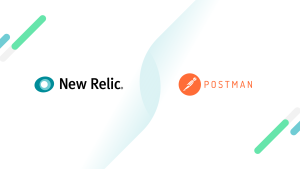A streamlined API process is important, especially when it comes to the fintech industry, because well-built and consistent APIs attract business. If the integration cost is too high and software developers need to learn the models of each API, they will prioritize a competing bank.
Let’s cover some API governance basics.
What is API governance?
API governance is a set of policies, procedures, and practices to manage and control the usage, development, and maintenance of application programming interfaces (APIs) within an organization or across multiple organizations. The goal of API governance is to ensure that APIs are developed, deployed, and used in a consistent, secure, and efficient manner, aligning with the overall business objectives and regulatory requirements.
Key aspects of API governance include:
- Standards and best practices: Establishing guidelines, standards, and best practices for API design, development, documentation, and usage to ensure consistency and interoperability across APIs.
- Security and compliance: Defining security measures and compliance requirements to protect sensitive data, prevent unauthorized access, and ensure adherence to regulatory standards such as GDPR, HIPAA, or PCI DSS.
- Lifecycle management: Managing the entire lifecycle of APIs from planning and design through development, testing, deployment, versioning, and retirement to ensure they remain relevant and effective over time.
- Access control and authorization: Implementing mechanisms for controlling access to APIs, managing authentication, authorization, and rate limiting to safeguard resources and ensure fair usage.
- Monitoring and analytics: Monitoring API performance, usage metrics, and analytics to gain insights into API usage patterns, identify potential issues, and optimize API performance and resource allocation.
- Documentation and communication: Providing comprehensive documentation, developer guides, and communication channels to support developers in effectively using and integrating with APIs.
Effective API governance helps organizations streamline development efforts, enhance security and compliance, foster collaboration among teams, and drive innovation by enabling seamless integration and interoperability across systems and applications.
Who is API governance for?
API governance is primarily for organizations that develop, maintain, and consume APIs, including:
- Enterprises: Large organizations with complex IT infrastructures often have numerous internal systems and applications that need to communicate with each other. API governance helps these enterprises ensure consistency, security, and compliance across their API ecosystem.
- Government agencies: Government entities frequently rely on APIs to enable interoperability between different departments, systems, and external stakeholders. API governance helps governments ensure data security, privacy, and compliance with regulatory requirements.
- Software development companies: Companies developing software products or platforms often expose APIs to allow integration with third-party applications. API governance helps these companies maintain quality, security, and reliability in their APIs to meet customer expectations.
- Service providers: Companies that provide API-based services, such as cloud services, payment gateways, or communication platforms, need to ensure the reliability, scalability, and security of their APIs to retain customers and compete effectively in the market.
- Startups and SMEs: Even small and medium-sized enterprises (SMEs) can benefit from API governance as they develop and deploy APIs to support their business operations, partnerships, and customer interactions.
- Developers and integrators: Developers who build applications that consume APIs rely on clear documentation, consistent behavior, and reliable performance from those APIs. API governance ensures that APIs meet these expectations, making developers' jobs easier and more efficient.
Ultimately, API governance is for any organization or individual involved in creating, managing, or using APIs. It provides a framework for ensuring that APIs are developed and managed in a way that maximizes their value while minimizing risks and ensuring compliance with relevant standards and regulations.
Engineering teams in a federated model often make their own decisions on how to build APIs. When there’s no consistent process—when each API is built to a single-use case—each team has to learn each different API documentation. Each API might also use different security technology, such as Mutual Transport Layer Security (mTLS) or JSON Web Tokens (JWTs). The IT security team then has to cover all of these potential threat vectors.
To make matters more complicated, new regulations on data or services available through APIs could be introduced—such as data privacy and AI ethics regulations and the new open banking standards in Europe—which each API will then be assessed against.
All of these challenges affect a company’s ability to build an ecosystem of third-party providers building with their APIs. They also make it difficult for software engineers to speed up feature and product development. Companies in only a few sectors—the Buy Now Pay Later, international remittance transfer, and e-commerce payment—offer consistent, well-designed, standardized APIs.
A centralized team solution?
The solution to these structural problems could be a centralized team that builds APIs for all business lines. But this causes another problem: it slows down new API development.
Models such as Team Topologies are influencing software design and API teams. In this model, a centralized platform team helps build standard tools, including style guides and an internal developer portal such as the open source backstage.io. With access to resources that support consistent API design, engineering teams can work at pace to create and deploy new APIs. The Team Topologies model also proposes creating an “enabling team”—made up of engineers from across the enterprise or from within the stream-aligned team and platform team—to facilitate the use of the style guide and other governance processes while building new APIs.
Best practices for crafting an AP governance strategy
Here are some API governance best practices:
- Establish clear API design guidelines: Define clear and comprehensive guidelines for API design covering aspects such as naming conventions, resource naming, request and response formats, error handling, versioning, and documentation standards.
- Ensure consistency across APIs: Enforce consistency across APIs to make them easier to understand, maintain, and consume. Consistency should cover not only design aspects but also security measures, error handling, authentication mechanisms, and communication protocols.
- Implement robust security measures: Prioritize security by implementing strong authentication mechanisms, access controls, encryption, and other security measures to protect sensitive data and prevent unauthorized access or attacks.
- Enforce compliance with standards and regulations: Ensure APIs adhere to industry standards (e.g., RESTful principles) and comply with relevant regulations (e.g., GDPR, HIPAA) to safeguard user privacy, maintain data integrity, and avoid legal issues.
- Provide comprehensive documentation: Create comprehensive and easily accessible documentation for APIs, including usage guides, code samples, SDKs, and troubleshooting resources, to facilitate integration and usage by developers.
- Implement versioning strategies: Define clear versioning strategies for APIs to manage changes effectively while maintaining backward compatibility and minimizing disruptions for API consumers.
- Monitor API performance and usage: Implement monitoring and analytics tools to track API performance metrics, usage patterns, and error rates. Use this data to identify bottlenecks, optimize performance, and improve the overall quality of APIs.
- Establish governance bodies and processes: Create governance bodies, such as API councils or steering committees, to define policies, review API designs, make decisions, and oversee API-related initiatives. Establish clear processes for API approval, review, and retirement.
- Facilitate collaboration among stakeholders: Encourage collaboration and communication among various stakeholders involved in API development, including developers, architects, business analysts, security experts, and operations teams, to ensure alignment with business goals and requirements.
- Continuously review and improve: Regularly review and evaluate API governance practices to identify areas for improvement, incorporate feedback from API consumers, adapt to changing technology trends, and address emerging security threats or regulatory changes.
Following these best practices will help organizations establish effective API governance frameworks that ensure the consistency, security, and reliability of their APIs while maximizing their value for both internal and external stakeholders.
Adopting API governance practices
API governance offers a set of tools to centralize the building of APIs. Drawing on centralized resources, engineering teams can create APIs using a consistent design and set of standards that match their priorities. Teams build APIs as they see fit, so each business or product team can remain autonomous.
Establishing governance processes can take some work. But after these processes are documented and defined, they can be automated—incorporated into CI/CD pipelines for example. After the process is set up, you can monitor governance through observability tools. This reduces governance oversight and allows innovation at pace, without compromising quality or robust API design. Security and regulatory requirements will be embedded into API designs. It also helps a financial services institution’s API ecosystem grow, creating new customer acquisition channels and new revenue streams.
Download the API governance scorecard with the 11 processes to put in place. Score your maturity using our checklist. Learn what these processes do, why they’re important, and how to measure them.
The views expressed on this blog are those of the author and do not necessarily reflect the views of New Relic. Any solutions offered by the author are environment-specific and not part of the commercial solutions or support offered by New Relic. Please join us exclusively at the Explorers Hub (discuss.newrelic.com) for questions and support related to this blog post. This blog may contain links to content on third-party sites. By providing such links, New Relic does not adopt, guarantee, approve or endorse the information, views or products available on such sites.



